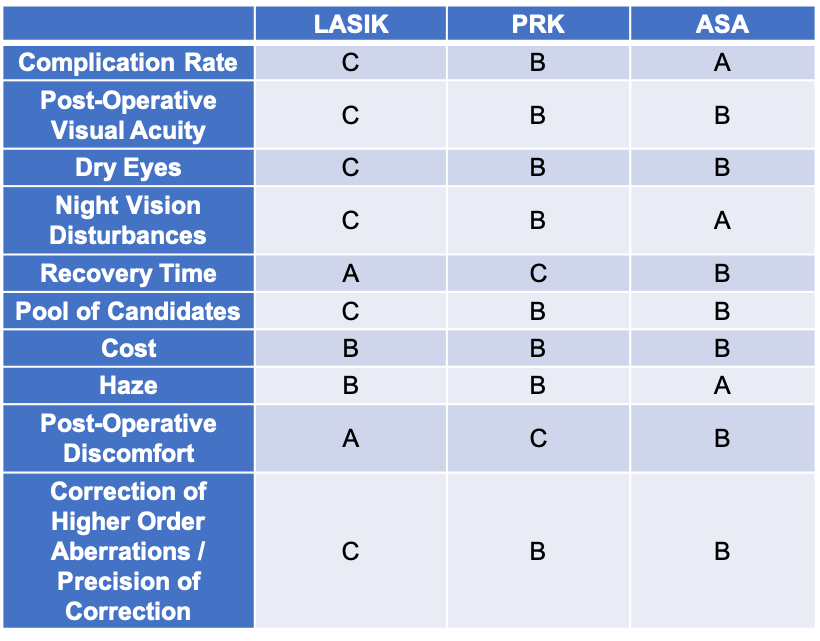Should you get LASIK Surgery in NYC (or anywhere else)?
All the refractive disorders – myopia, hyperopia, astigmatism, and presbyopia – can be corrected by prescription lenses. But many people dislike wearing glasses or contact lenses every day, and every year over one million people in the United States choose to have some type of refractive surgery.
Most of these people are tired of being dependent on glasses or contact lenses; aren’t you?
Some of them are contact lens intolerant, which means they can no longer wear contact lenses without irritating their eyes. There are many reasons to opt for refractive surgery, including the inconvenience of dealing with glasses or contact lenses. Your lifestyle will probably have the most influence on whether or not you decide to have this procedure. And more importantly those very active athletes and professionals are choosing LASEK / ASA (the two terms are almost interchangeable) because it gives them a competitive edge, on top of being 10x safer than LASIK.
Read my blog comparing LASIK, PRK, and ASA.
Am I the right age?
The general age recommendation is for people who are between 18 and 55 years old. The factors that determine whether you are the right age concern the general health and condition of your eyes. For example, even if you are the right age, some older people may have cataracts and this prohibits them from having laser vision correction surgery.
Younger patients can also undergo ASA (LASIK limit is 21!) Instead of aiming for a laser-corrected vision of 20/20, Dr. Moskowitz can adapt the surgery to produce a vision of 20/15. This means that the resulting vision is better than average, and allows for some deterioration without compromising the final result. Another option is to enhance the laser-corrected vision many years later simply by having ASA again (this is called an enhancement).
Is my vision correctable?
The current ASA/LASEK procedure and the recently developed wavefront-guided ASA accommodates many prescriptions, whether they be for myopia, hyperopia, or astigmatism. A good candidate has a stable prescription, a minimal corneal thickness (varies with the amount of correction), and a cornea with regular steepness.
The term diopter refers to the amount of refractive error in your eyes. A negative number indicates myopia, and a positive number indicates hyperopia. A greater diopter measurement signifies a higher corrective prescription needed.
Do I have healthy eyes?
People who have glaucoma, dendritic corneal ulcers, severely dry eyes, keratoconus, aggressive keloid formation, corneal dystrophy, or other serious disorders or diseases are not eligible for refractive surgery.
To ensure that your eyes are healthy before your ASA/LASEK, soft contact lenses should not be worn for 7-10 days prior to surgery, and hard contact lenses must be removed at least three weeks before surgery. This is important for the most optimal surgical results because contact lenses usually warp the cornea (changing its shaper), and patients need to allow time for the cornea to regain its natural shape.
About the Author
Dr. Craig Moskowitz, MD, FRCSC is a dually board-certified comprehensive ophthalmologist who specializes in Advanced Surface Ablation (ASA), the most advanced non-cutting Laser Vision Correction. He strongly believes that this is the safest laser procedure available to treat nearsightedness, farsightedness, and astigmatism.


